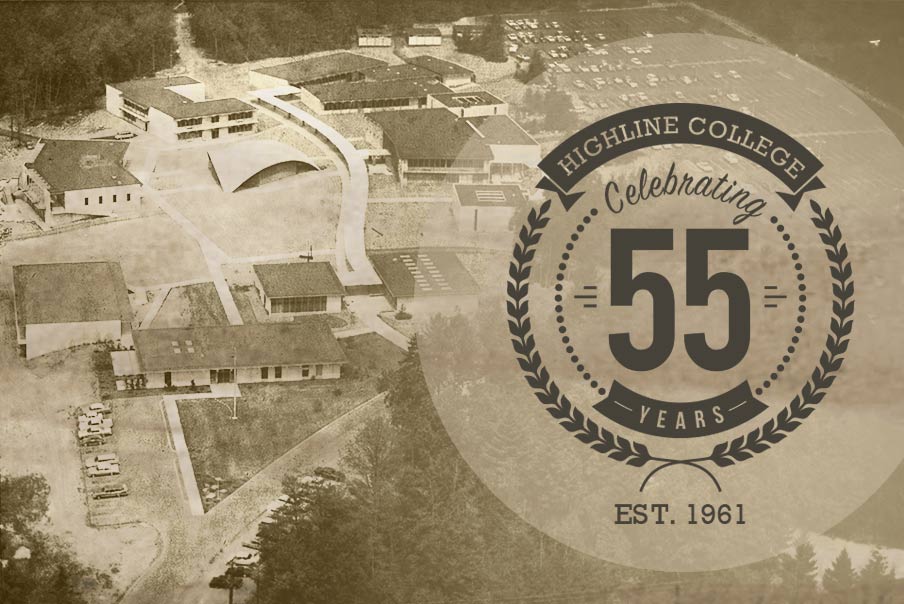
Highline College: Why Here? Why Then?
By Dr. Tim McMannon
“Highline College: Why Here? Why Then?” is the first of three vignettes by Highline history instructor Tim McMannon. Originally written in 2011 for Highline’s 50th anniversary, the piece has been reformatted for Highline’s website, giving more people a chance to learn about the college’s rich history.
Read McMannon’s other vignettes, “1968: Protest Comes to Highline” and “Our Award-Winning Campus (Buildings!),” both published electronically in conjunction with the college’s 55th anniversary celebration during the 2016–17 academic year.
Founded in 1961, Highline College was the first public two-year college in King County. This statement raises two obvious questions: Why was it established in Des Moines rather than somewhere else in King County? And why then? The short answer to both questions is that there was a need and a desire for higher education in south King County by the early 1960s. A more complete explanation tells a story of population growth, grassroots organizing, educational and business leadership, and legislative practicality.
The starting point for this story is the post-World War II baby boom, the rapid growth in population that changed the face of the United States. Between 1940 and 1960, the population of the country rose by about 37 percent, from 132 million to 181 million. During that same span, the number of residents of King and Pierce counties nearly doubled, from 687,000 to almost 1.3 million. Since most of the nation’s population growth came through births rather than immigration during those years,[1] there was a growing need for schools, first at the elementary level, then the secondary.
By the late 1950s, when people were talking seriously about a community college in south King County, it was obvious that this wave of students would hit — and possibly overwhelm — colleges and universities by the mid-1960s. The 1960 census documented the problem: young people aged 5 to 14 were the largest cohort in the Census Bureau’s age-grouping system, making up 19.8 percent of the population. Again, south King County exceeded the national rate. In the North and South Highline census divisions (roughly today’s Highline School District), those aged 5 to 14 composed 23.9 percent of the total in 1960.[2] And not only were there more young people in the United States, but more of them were choosing to attend college than ever before. In 1958, the number of students enrolled in American colleges and universities crossed the 3 million mark for the first time, with over 20 percent of the population aged 18 to 24 attending a college or university.[3] Concerned observers at the national, state and local levels asked the same question: where would all of these students go to college?
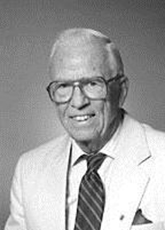
Carl Jensen
In the Highline School District, a blossoming adult education program seemed to offer at least a partial answer to that question. What began in 1949 as a series of home-based art classes for interested women had grown by the late 1950s into the largest evening education program in the state. According to Carl Jensen, superintendent of the Highline District from 1953 to 1971, the program served some 1,600 people each week, with over 100 classes meeting in several of the district’s buildings. In addition to art, classes were offered in home building and remodeling, landscaping, Spanish, current events and mathematics. As Jensen concludes: “This was a signal that some form of continuing education beyond the high school was greatly needed.”[4] This informal, low-cost program fit the bill for many in the area, but others wanted more: they wanted college credit.
To begin to meet that demand, in 1959 the Highline District added four “extended secondary” classes to the evening program: English composition, general psychology, algebra and intermediate trigonometry. Because the courses covered postsecondary content and were taught by instructors with doctorates, the district successfully petitioned the state’s four-year institutions to accept them as transferable undergraduate courses. These four courses, however, were only a fraction of the college-level instruction that was needed in south King County.
A logical solution would have been to petition the state for a community college,[5] but a 1941 law prohibited state funding for any two-year institution in a county that already had a public or private baccalaureate college or university.[6] In fact, according to Jensen, the creation of the extended secondary classes in the Highline District was part of the local strategy “to enhance the application for a community college when the law could be changed.”[7]
Another law, passed in 1945, allowed existing junior colleges to submit to direct control by the local school district, which all did, becoming grades 13 and 14 in the public school system. Positioning themselves in the school districts enabled the junior colleges to benefit from the districts’ more stable funding and organization.
Even with the support of a school district, however, a new community college that did not receive state appropriations was not likely to survive. Despite burgeoning populations and a growing need for additional college access, several counties, including King and Pierce, were effectively shut out of the two-year college business because they already had four-year institutions. For the Highline area to get a new community college, the law would need to be revised or replaced.
In 1956, State Superintendent of Public Instruction Pearl Wanamaker had helped begin the long process that would bring about new legislation. A strong advocate of community college education, Wanamaker proposed, at the behest of the State Board of Education, a study of Washington’s junior colleges. The study committee, led by Lloyd Woodburne, dean of the College of Arts and Sciences at the University of Washington, submitted its final report in June 1957. Among the Woodburne Committee’s key recommendations were that the State Board of Education should use a new formula both for establishing junior college districts independent of their K–12 school districts and for determining where additional colleges should be founded, that community college budgets should be separated from the budgets of their host school districts, and that the state should carry out another study, this one a comprehensive look at postsecondary educational needs. Any one of these recommendations, if implemented and enforced, had the potential not only to bring about a fundamental change in the governance of the state’s community colleges but also to lead to a new wave of community college building — if the legislature eliminated or replaced the 1941 law.
In November 1957, the State Board of Education requested that the governor authorize the comprehensive study recommended by the Woodburne Committee. The Board also authorized the State Supervisor of Junior College Education to carry out an additional study on commuting distances to the existing community colleges.[8] Neither was a far-reaching step but, again, depending on the studies’ conclusions, each held the potential for increasing the number of community colleges in the state.
In the meantime, changes took place in key statewide educational leadership positions. In the office of superintendent, Lloyd Andrews replaced Pearl Wanamaker. This might have been seen as a setback, since Wanamaker was one of the leading proponents of community college education in the state, but it actually worked to the advantage of expansion. Andrews himself focused mostly on elementary and secondary school issues, delegating a great deal of authority for community colleges to State Supervisor of Junior College Education D. Grant Morrison. When Morrison resigned in summer 1957 to join the U.S. Office of Education, Andrews appointed Lloyd J. Elias to replace him in the position, now titled Director of Junior College Education. Elias had been a faculty member and dean at Olympic Junior College, a leader of the Woodburne Committee and an outspoken advocate of expansion.[9]
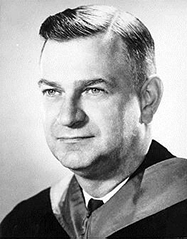
Dr. Charles Odegaard
Another leadership change was in the presidency of the University of Washington. In 1958, Dr. Charles Odegaard became president, with an agenda that included raising the national reputation of the university, meeting the needs of a rapidly expanding student body and carrying out a much-needed building program. Although he might have opposed community colleges as competitors for state funding — at a time when the UW needed all the money it could get — he did not take that stance. Instead, he pushed for making higher education more democratic by creating more opportunities for students, including opportunities in community colleges. Further, he reasoned, as historian of education George Delaney put it, that “a great university required the support of a great state college and junior college system, as well as a strong common school system.”
The logical outcome of this thinking was Odegaard’s backing of the expansion of the community college system as well as his call for increasing autonomy in the two-year schools — provided that his university would receive growing state support and provided that high educational quality could be maintained at all levels. Critics sometimes contend that Odegaard was worried about over-enrollment or an influx of poorly prepared students at UW and simply wanted to push off the first two years of undergraduate study on the community colleges so the university could focus on graduate education. Whether that is the case or not, the result of his entering the debate was more support for overturning the law that prevented King County from establishing new community colleges.[10]
Boeing, the area’s largest employer and a major political power, also joined the discussion, coming down firmly on the side of creating new community colleges. In 1958, the company’s personnel director, Fred Huleen, pointed approvingly to the ability of the two-year institutions to provide post-high school technical training.[11]
The development that finally pushed the state legislature to give serious thought to replacing the 1941 law was pressure from administrators in the existing community colleges and the State Board of Education. Building on a position paper apparently written by Lloyd J. Elias as well as the increasingly obvious need for more college-level education, the state legislature considered a number of bills in its 1959 session. Provisions in some bills were quite minimal: House Bill 78 would add only two more community colleges to the existing roster of 10. Others called for more aggressive expansion, with the most permissive being House Bill 386, which Delaney described as “a veritable ‘blank check’ for community junior colleges.”[12] But H. B. 386 also called for the State Board of Education to set entrance requirements not only for the community colleges but for the universities as well. This provision alarmed the four-year schools’ administrators, including the UW’s Odegaard, because the universities were accustomed to controlling their own admissions processes. Their resistance convinced the legislature to slow down on expansion, and none of the permissive bills passed. Rather, the legislature passed a bill, proposed by Senator Andy Hess (whose senate district included the Highline School District), to carry out what was called the Interim Study of Education. Hess himself would chair the overall study, while President Odegaard would lead the study’s 15-member advisory council and serve on a key subcommittee, Education Beyond the High School.[13]
Over the next two years, 1960 and 1961, the movement to expand the number of community colleges in the state gained momentum, with Odegaard frequently in the lead. Even before the Interim Study of Education could get started, he pressed the UW’s Board of Regents to adopt a statement reflecting his position on community colleges: that with proper planning, quality control and adequate funding, a well-developed system of community colleges would buttress and supplement the higher education opportunities offered by the state’s universities. Odegaard also cultivated relationships among the presidents and other academic leaders of the state’s two-year and four-year institutions. Building on both informal meetings — including a dinner party at Odegaard’s home — and more formal gatherings, the state’s college presidents formed the Washington Association of Colleges in May 1960. Then, in August of that year, the Interim Study on Education was completed. Odegaard wrote the preamble for the report of Subcommittee I, Education Beyond the High School. Both his preamble and the full report advocated a carefully controlled expansion of the number of community colleges.[14]
There was, nevertheless, opposition to creating additional community colleges. Some school district superintendents resisted expansion because they worried that the state’s education funds would be spread too thinly with additional institutions of higher education. As a result, existing colleges as well as the K–12 system would suffer. Some also thought that presidents of existing community colleges had overstepped their bounds in working together and with leaders such as Odegaard from the four-year institutions to advance an expansion agenda. After all, the presidents and their community colleges were formally under the control of the superintendents and the school districts in which the colleges were housed.[15] This, however, would prove to be the losing side in the argument.
By the time the state legislature convened in 1961, the momentum was irresistible. Studies had been completed, alliances made. Overshadowing nearly all other considerations was the coming crush of baby boom students who were and would be seeking postsecondary education. Something had to be done, and quickly. And something was. The legislature passed Senate Bill 296, authorizing the creation of new two-year institutions. The restriction on founding new community colleges in counties that already had four-year colleges or universities was lifted. For the 1961–63 biennium, the legislature approved adding two new community colleges, but eight school districts applied for permission. Of the eight, Highline, with its booming population, existing postsecondary courses and strong local organization, was clearly the top choice of state officials, and it was awarded the first community college in King County.[16]
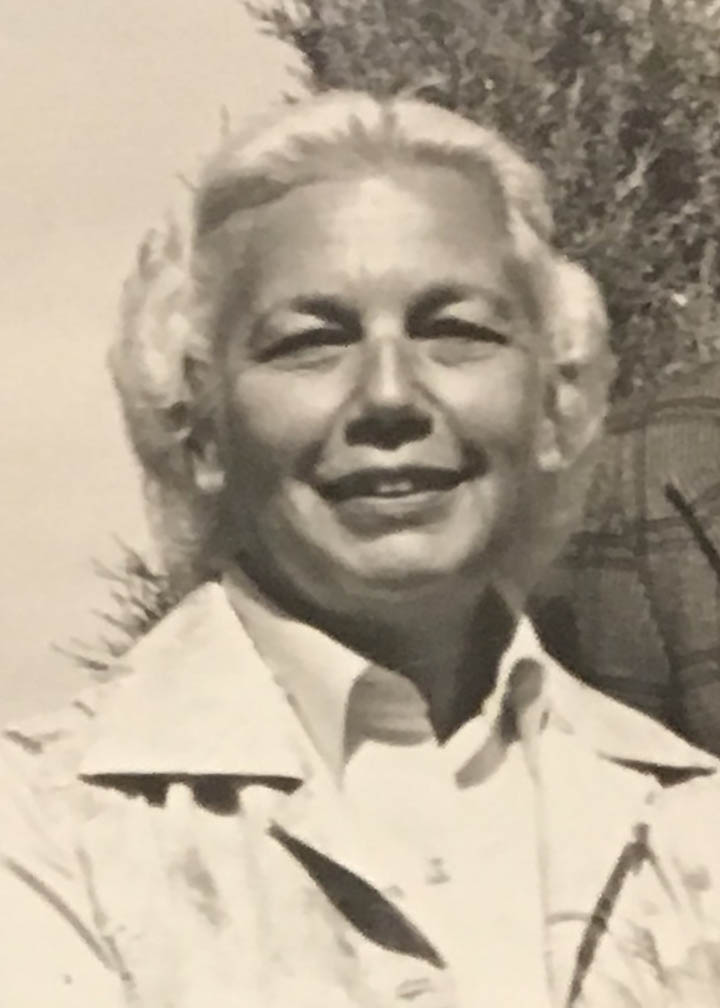
Dr. Shirley Gordon
The hard work of so many people had paid off. Or so it seemed. There remained the touchy subject of financing the college. Although the state was offering a nine-to-one match for funding, the Highline District still needed to come up with its 10 percent, and passing a college construction bond would not be easy. Resistance came first from the school board. As Superintendent Carl Jensen recalls, the district was the fastest growing in the whole Northwest, and voters “had passed 20 building levies and bond issues and had at that time 22 building projects in one or another phase of planning or construction. To take on another burden required some board members to hesitate.”[17] Eventually, the school board approved submitting a bond request to voters. Now it was the taxpayers’ turn to hesitate. The first bond vote went down to a narrow defeat. Superintendent Jensen then appointed a committee to explain to the public the need for the college and the bond issue. One of the members of this committee was Dr. Shirley Gordon, who had taught mathematics classes in the extended secondary program offered by the district and would be a founding faculty member and then president of Highline College. Gordon and the rest of the committee did their job well: voters approved a $711,000 bond issue when it was resubmitted for their consideration.[18]
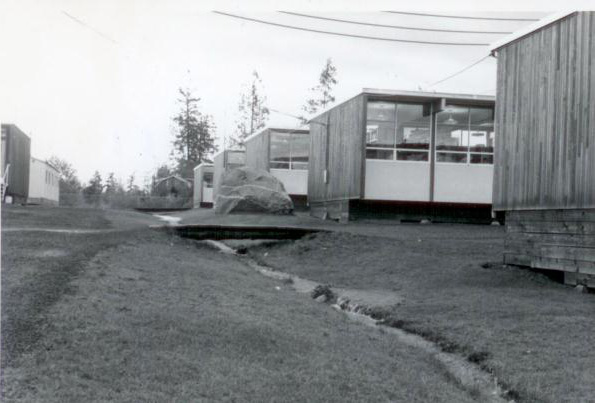
Portables at Glacier High School
Now the district needed an appropriate site for the college. Finding a location was complicated by the existence of Seattle-Tacoma International Airport, which had been built in the center of the district in the 1940s, had been expanded several times since then, and was undergoing another expansion to handle anticipated traffic for Century 21, the Seattle World’s Fair of 1962.
Proximity to jet noise took some potential sites out of consideration. Others were eliminated because they were too small or were wetlands. Ultimately, a 75-acre site at S. 240th Street that was part of the state School Land Preserve proved to be acceptable. Proper building design and insulation could prevent jet noise from interfering significantly with educational activities.[19]
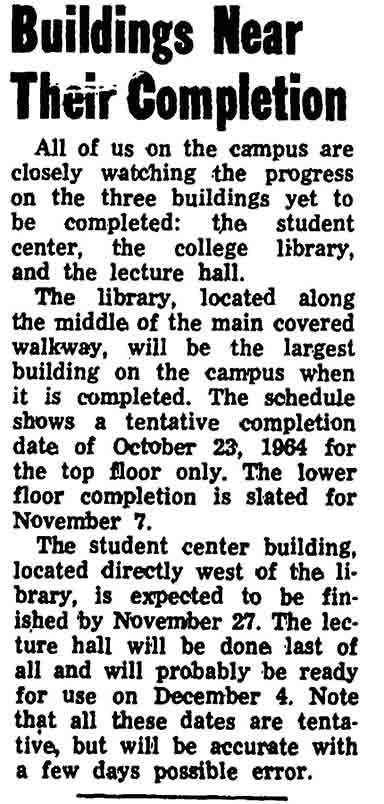
Thunder-Word student newspaper article, October 1964
When construction began at the present location of Highline College, another problem emerged: mud. Even after the campus opened in 1964, students and faculty members had to stay on walkways to avoid sinking into the mud. Eventually, the site was properly drained, and the terrain became less treacherous.[20]
While construction went forward on the campus-to-be, Highline classes were held in portable classrooms at the new Glacier High School. District policy was to avoid moving juniors and seniors when a new school opened, so Glacier, with only sophomores on site, had some available space for college operations. High school and college students shared the gymnasium, cafeteria and a few other parts of the campus.[21]
By fall 1964, construction had advanced to the point that the new college campus could open. Faculty and staff members celebrated with a horn-blowing procession of personal cars and district vehicles.[22] There was still much work to do, as a glance at the Thunder-Word student newspaper from October 1964 makes clear. Article titles in that month’s issue included “Cafeteria Opens on December 1,” “Buildings Near Their Completion,” “Intramurals Soon” (“as soon as the facilities are available,” as the short article put it), and “Athletic Pavilion to be Completed Soon.”[23]
But the opening chapter of the history of Highline College had been completed: the district had its community college, and the college had a campus to call its own. The rest of that history was yet to be written.
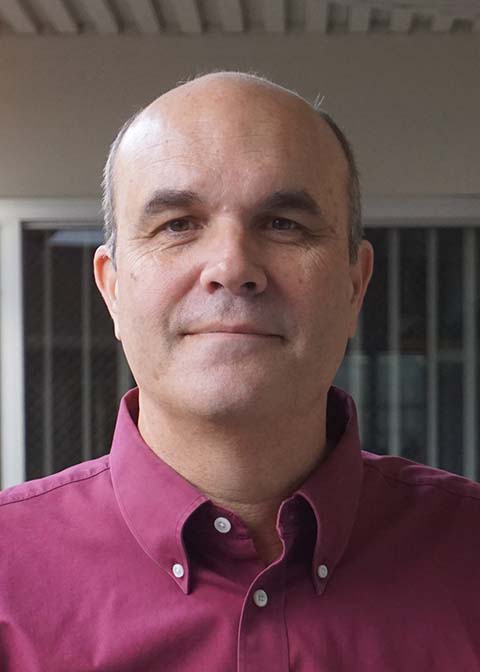
About the Author
Tim McMannon teaches American history survey courses, Pacific Northwest history, and the Civil War at Highline College. He earned degrees from the College of Southern Idaho (A.A., 1982), Pepperdine University (B.A., 1985 and M.A., 1987), and the University of Washington (Ph.D., 1994). Before joining the faculty at Highline in 2000, he worked as an adjunct faculty member at several community colleges in the Seattle area and as a researcher in the history of education and teacher education at the Institute for Educational Inquiry.
Notes
1. For example, the population of the United States in the 1950 census was 151,326,000; in 1960, it was 179,323,000, an increase of 28,000,000. (U.S. Census Bureau, “Statistical Abstract of the United States: 2003,” Table 1, Population and Area: 1790–2000). During that same decade, about 2,500,000 people immigrated to the United States, representing only about 9 percent of the overall increase; and U.S. Census Bureau, “Historical Statistics of the United States: Colonial Times to 1970,” Bicentennial Edition, Part 1 (Washington, D.C., 1975), p. 105.
2. Adding in the younger and older cohorts to include all those under age 24 (those most likely either to be attending college or to addend in the next decade or two) makes the Highline census divisions’ problem even clearer. Fully 50 percent of the population was 24 or younger. 49–60.
3. “Historical Statistics,” part 1, p. 383.
4. Carl Jensen, “Highline School District Chronicle” (no date, c. 1993), p. 69.
5. The term “community college” was popularized by the 1947 report “Higher Education for American Democracy,” prepared by the President’s Commission on Higher Education, nicknamed the “Truman Commission.” Before publication of that report, the more common name for two-year institutions was “junior colleges.” See George A. Delaney, “The Development of the Washington Community College Act of 1967” (Ed.D. diss., University of Washington, 1990), pp. 129–131.
6. Washington State Board for Community & Technical Colleges, “History,” accessed 2 December 2016. See also Delaney, “Development,” p. 108.
7. Jensen, “Chronicle,” p. 187.
8. Delaney, “Development,” pp. 140–145.
9. Delaney, “Development,” pp. 148–149.
10. Delaney, “Development,” pp. 151–153. The quotation is from p. 152.
11. Delaney, “Development,” p. 155.
12. Delaney, “Development,” p. 157.
13. Delaney, “Development,” pp. 157–161.
14. Delaney, “Development,” pp. 166–177.
15. Delaney, “Development,” p. 174.
16. Delaney, “Development,” pp. 194–197.
17. Jensen, “Chronicle,” p. 71.
18. Jensen, “Chronicle,” pp. 71, 188. For comparison, Jensen reports that Highline District bonds and levy issues for the K–12 schools for 1959 were $300,000 and $585,000; for 1960, $790,000 and $850,000 (p. 58).
19. Jensen, “Chronicle,” pp. 71–72.
20. Jensen, “Chronicle,” p. 72.
21. Jensen, “Chronicle,” p. 73.
22. Jensen, “Chronicle,” p. 73.

